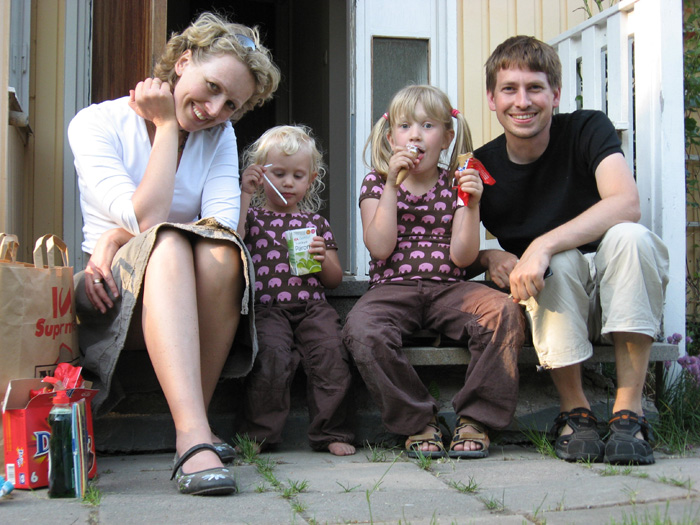From Sweden to EMBL … and back

A Swedish postdoc came to EMBL in 2004. Three years later he returned home with a new love. This is his story…
It’s thanks to the Alumni Association Swedish Postdoctoral Fellowship that Johan Ledin came to EMBL in 2004, after completing his PhD at Uppsala University. Funded by the Swedish Foundation for Strategic Research, the award enabled Johan to continue his studies at EMBL in finding possible roles for HSPGs in the development of vertebrates. He did this in Carl Neumann’s lab, at EMBL’s Developmental Biology unit, where he also fell in love with zebrafish as a model system. “Apart from the ease in manipulating and studying developing embryos in zebrafish, I just like dealing with these creatures. I never felt that when I was working with mice – it felt like a necessary burden.”
While working with this new model system was fun and challenging, it was also stressful to be an amateur again and to constantly ask others for advice. In addition to this shift in his area of work from biochemistry to developmental biology, Johan was also trying to make things work in his relocation from Sweden to Germany with his family. “It was quite exhausting. Unlike most postdocs, I couldn’t just throw my belongings in a room at the EMBL guest house and go grab a beer!”
It also took a while to adapt to German culture. “Germans are much more frank in the way they communicate. The first time I was publicly scolded at Bauhaus for using the wrong elevator, I was shocked. Later on I realised that this is pretty normal; it doesn’t mean anything harsher than ‘oh dear, please use the left elevator next time, if possible’. This tendency to express your annoyance instantly and loudly would lead to lifelong hostilities in Sweden.'”
Some things, however, were more familiar. “We recognised so many things – from tiny details of Christmas decorations to traditional songs, children’s plays, architecture and attitudes – as Swedish. Despite the enormous influence by English and American culture, Sweden is clearly a part of the German cultural sphere. If you ask me, Swedes can be defined as poorer but cooler Germans!”
After this ‘interesting chaos’, everything started to fall into place. Johan’s wife Anna Ledin, also a postdoc from Uppsala University, began work at EMBO. Their two daughters Agnes and Julia, five and one at the time, settled in at the EMBL Kinderhaus and started to gain fluency in German.
At the end of his fellowship, Johan was offered a four-year post as Assistant Professor at Uppsala University, and Anna a position as Scientific Secretary at the Royal Swedish Academy of Sciences. The Ledin family returned to Sweden in the summer of 2007, and Johan is now in the process of establishing a zebrafish facility to continue the work he started at EMBL. His aim is to systematically investigate when certain aspects of HSPG biosynthesis have an instructive role in the function of paracrine factors by using the available techniques in the zebrafish model system to manipulate gene expression of HSPG biosynthesis enzymes. “To this end, a continued cooperation with EMBL is imperative to my work both now and in the future.”
What’s exciting about his new position is the opportunity to create strategies to investigate the potential role of proteoglycans in morphological evolution, where so far very little research has been done. Within five years, Johan intends to have created a group at Uppsala with a unique specialisation in the biochemistry and developmental biology of proteoglycans, in which Uppsala has a long tradition of world-leading research.
In the meantime, Johan is surprised that so few Swedish postdocs are familiar with EMBL. “When I took part in a tour of all the universities in Sweden last spring, I found that the knowledge of the existence of EMBL is very low, and based on word-of-mouth only. We need to find a way to reach out to those who are not familiar with it.”